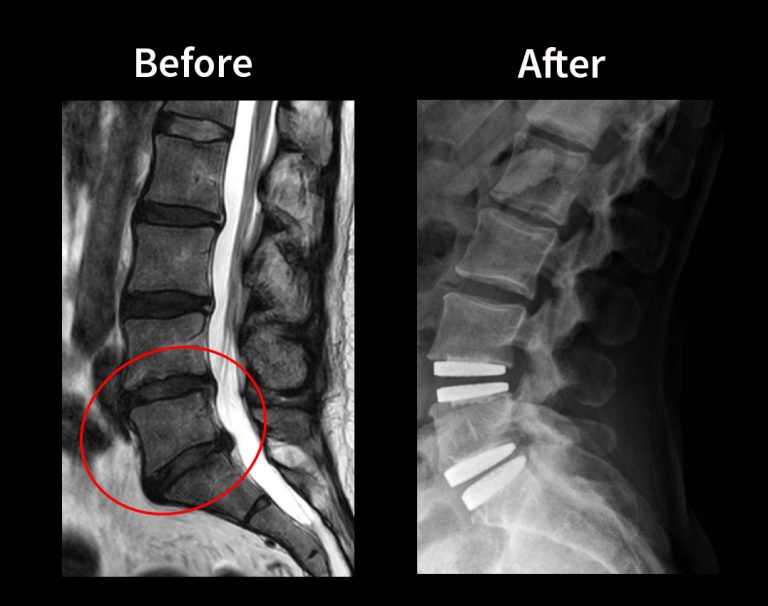
Disc replacement surgery involves the removal and replacement of a damaged or worn-off disc an artificial or synthetic disc. Find out more about the procedure here and why it is sometimes recommended over other types of surgery.
The procedure is done to relieve back or neck pain problems. It helps sustain more normal motion as compared to other treatment options like spinal fusion.
Disc replacement surgery is thought to reduce the chance of the adjacent disc undergoing accelerated wear and tear compared to spinal fusion.
The disc replacement surgery can be performed on both the cervical and lumbar region. A lumbar disc replacement surgery is usually recommended in patients that have lower back pain. But despite this, not all patients suffering from lower back pain are a good candidate for a disc replacement procedure. Therefore, it is very important to get an accurate analysis and diagnosis done by the doctor.
Lumbar disc replacement surgery might be advised due to the following reasons:
The doctor will discuss the procedure in detail with the patient before the procedure. A complete physical examination of the patient is done along with medical history, X-rays, CT scan or MRI, and blood tests.
There are a few following points that the patient is asked to take care of weeks before the procedure:
The surgery is done under the effect of anaesthesia. The surgeon makes an incision on the patient’s abdomen. Then the blood vessels, tissues, and organs are moved aside to reach the spine.
The surgeon removes the worn or damaged disc and replaces it with an artificial disc. The tissues, blood vessels, and organs are put back in their original place. The surgeon then closes the incision with the help of sutures.

A short admission for 1 or 2 days after a disc replacement surgery is usually recommended to monitor for pain and any complications.
During this time the doctors will supervise the mobility of the patient to ensure they can walk and stand. Initially, the patient might need a walker or a cane for support.
The urinary catheter and IV lines may be removed within a few days post-surgery.
The patient is taught to perform some simple exercises very gently like trunk twists. This will help in the speedy recovery of the patient. Gradually the patient will be advised to stretch and walk properly without support. The total recovery time required after disc replacement surgery ranges from a few weeks to months.
Some of the possible complications involved with artificial disc replacement surgery are as given below. Almost all of these are common to a fusion surgery.
Thirteen studies, including five retrospective studies and eight prospective studies, met the criteria. A total of 946 patients were involved who stated 3 years of their follow-up outcomes. Patients demonstrated significant improvements in their Oswestry disability index. With (ODI) scores of 15.6 to − 44.4 for and VAS scores of 51.1 to 70.5% at the last follow-up. The overall patient satisfaction rates in eight studies were reported from 75.5 to 93.3%.
Patients mostly experience some mild discomfort and pain in the following days and weeks after surgery. Most commonly, the soreness and pain are felt at the incision site. Other symptoms may include difficulty in swallowing or speaking, standing, and walking without support. As the recovery period progresses, other symptoms also start resolving.
Disc replacement is a procedure that replaces the discs in the spine and has a comparable or better results than a spinal fusion. Some of the other advantages of disc replacement include greater movement, less stress on spine, and faster recovery.
Though no major side effects or safety issues have been observed in disc replacement, post fusion. However, more research data is needed to substantiate the findings.
After the surgery, patients can start driving within two to three weeks. While driving, the patient should use a pillow or lumbar arch for support. The patient can also return to work or start working on a computer 2-4 weeks post surgery.
It depends on your condition and the procedure performed. The additional support can help in healing after the surgery. Collars support your head and spinal cord and limit the movement of your neck and head. Brace provides support to the spine, back and stomach.
Some factors that can affect post-surgery period include: